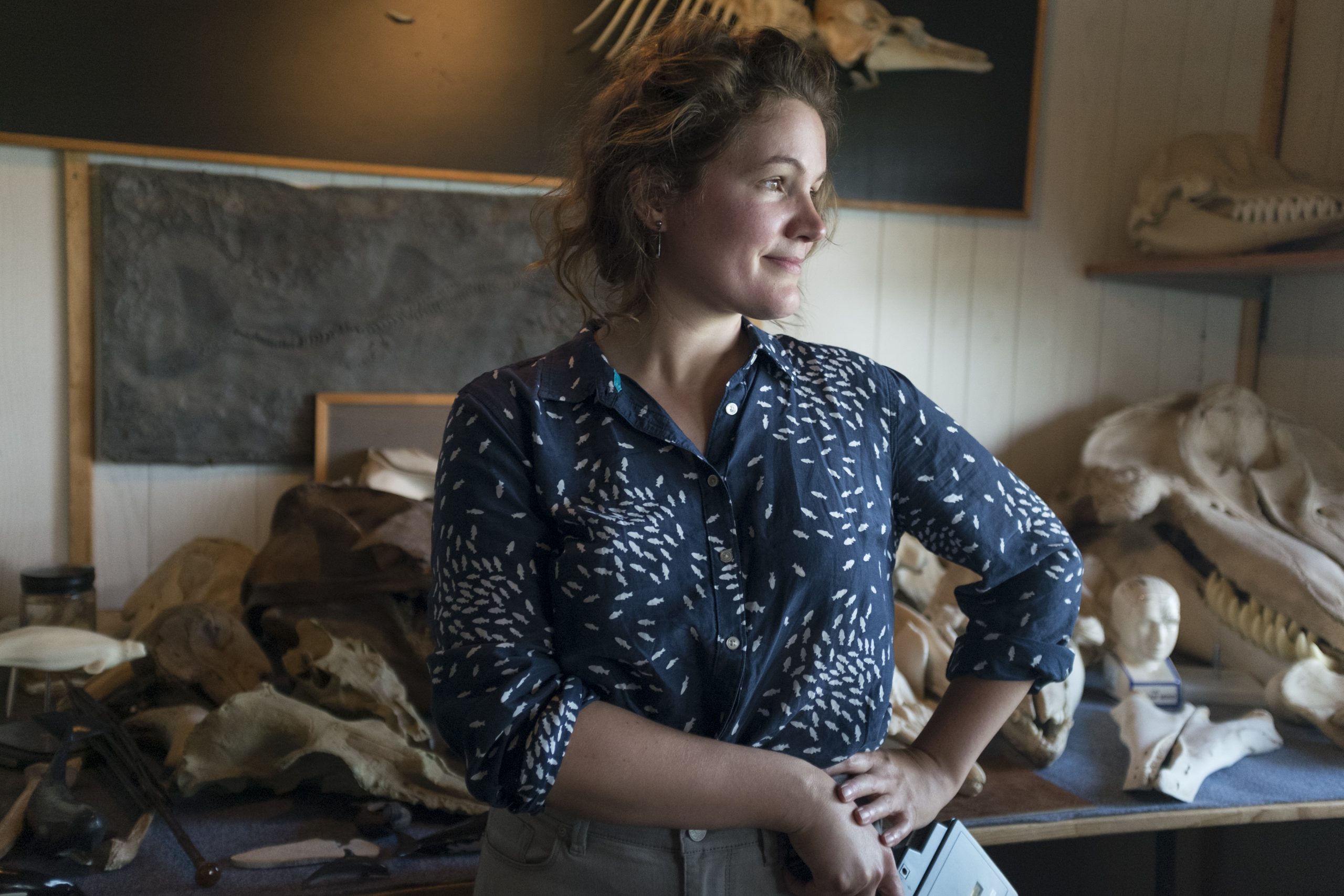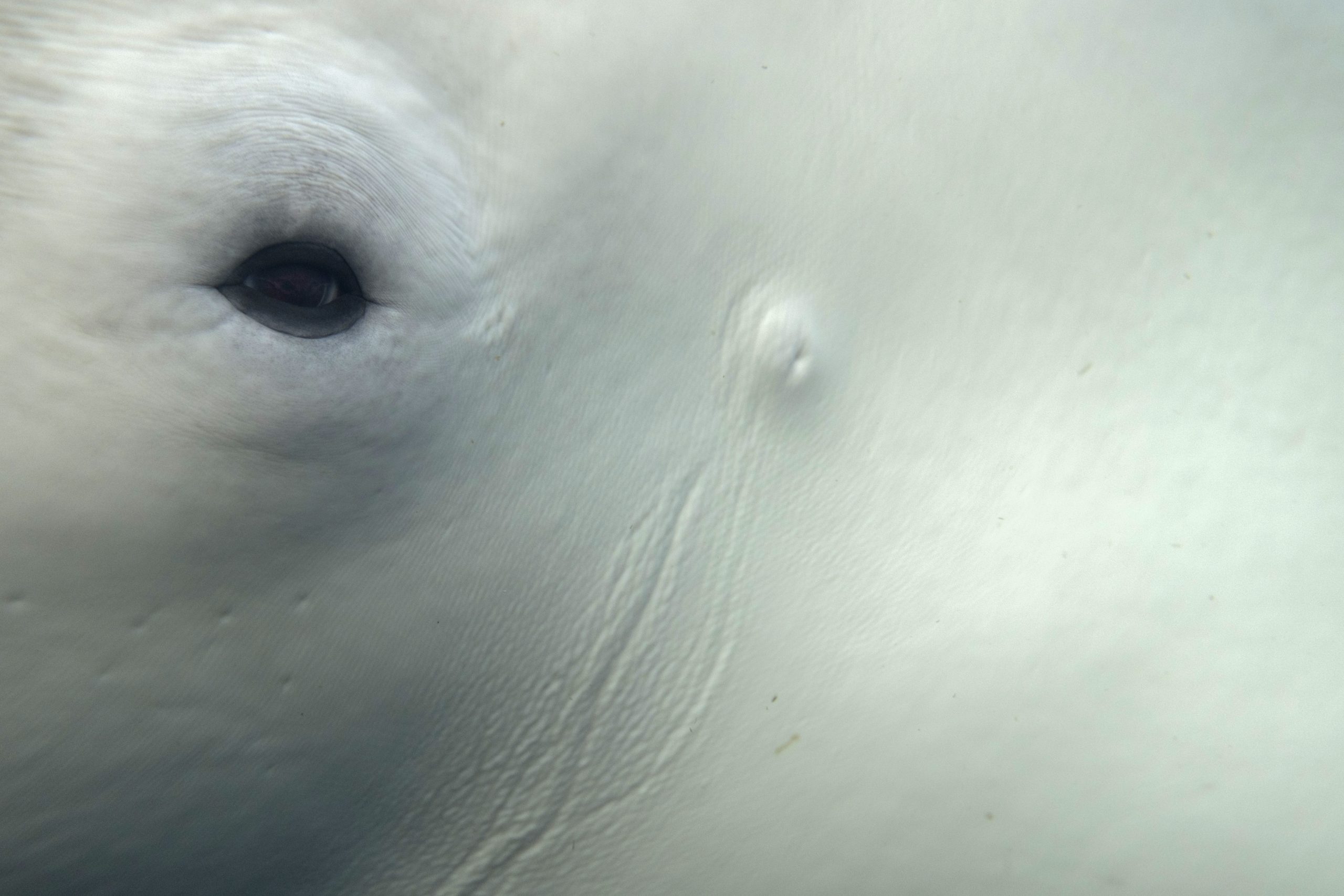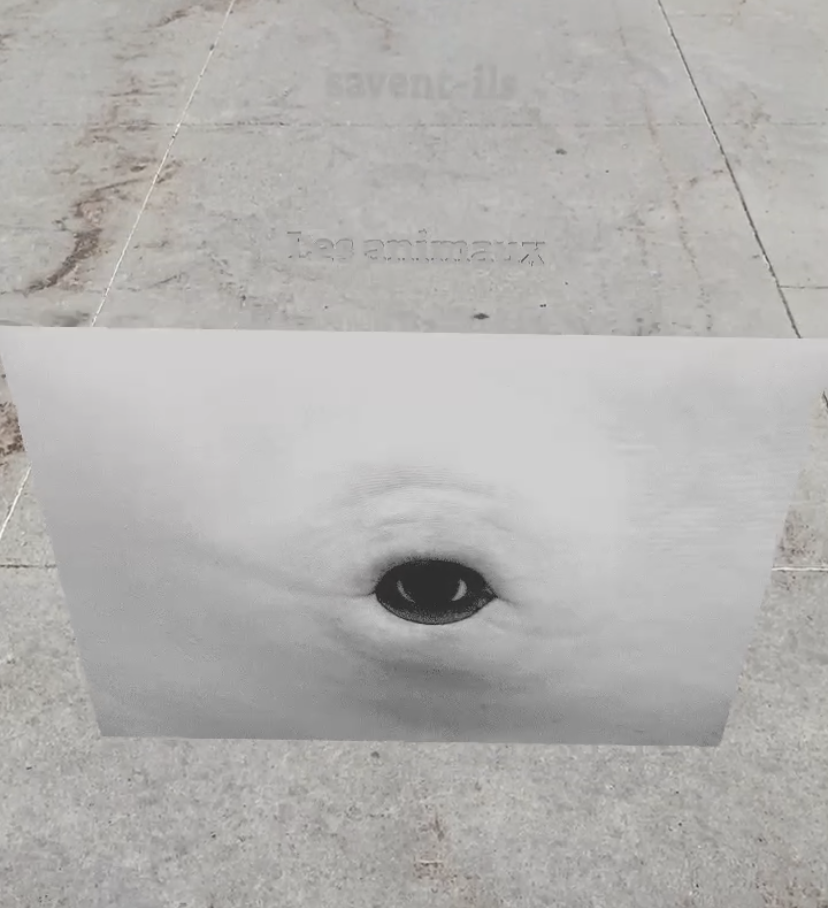Artists
Maryse Goudreau
Maryse Goudreau (born in Campbellton, Canada; lives in Escuminac, Canada) probes social, political, and environmental issues through works that navigate among photography, sound art, performance, installation, and film. She is interested in what has been relegated to the margin of official history as she creates narrative, pictorial, and literary spaces to bring these to light. For almost ten years, she has been fascinated by belugas, and has reconstructed their social and political history by creating a vast archive—a dataset and multiple art projects—devoted to these white whales.
- Born
- Campbellton, Canada
- Countries / Nations
- Canada
- Lives
- Escuminac, Canada
- Website
- marysegoudreau.com

Works

Maryse Goudreau, Ceux et celles qui écoutent les baleines / Whale Listeners, 2021, video still. Courtesy of the artist

Maryse Goudreau, Musée du squelette, 2015, image from the installation Ceux et celles qui écoutent les baleines / Whale Listeners, 2021. Courtesy of the artist

Maryse Goudreau, L’oreille du béluga, 2016, inkjet print. Courtesy of the artist

Maryse Goudreau, Présage de 1995, augmented reality artwork documentation, 2021.
Wet Futures
The installation Ceux et celles qui écoutent les baleines / Whales Listeners takes us to a world woven around love for whales, where science, folklore, and spirituality intertwine. On one side of the small exhibition space, a multitude of items evoking these sea mammals fill an alcove. The composite collection includes various objects and images, including bones, scientific photographs, sculptures, and a poster from the magazine 7 Jours that Goudreau has kept since she was a child—all mementos accumulated over time, some produced by the artist, others found or borrowed. On the opposite wall, a video shows people listening, fluvial landscapes, and scenes from daily life, all these images serving as reference points or visual connections to the centrepiece of the immersive environment: an independent soundtrack. In turn, people try to describe the whale song that they are hearing, their interpretations differing according to their respective sensibilities. Their voices, inundating the installation, transport us to various places: to Svalbard, into the Arctic Ocean, to the banks of the St. Lawrence River, to an aquarium, or into a house. In Ceux et celles qui écoutent les baleines / Whales Listeners, Goudreau explores animism, the belief that attributes anthropomorphic properties to nonhuman beings, expanding the notions of intention, emotion, and compassion to plants, animals, and inanimate objects—here, specifically, to whales. The work brings together the many encounters that Goudreau had during her research on belugas. This touching portrait of humanity asks us to pay attention to these sea mammals, whose voice is audible to anyone who knows how to listen.
Liquid Crystals
The project Présage de 1995 takes shape around an excerpt from Goudreau’s latest book, La conquête du béluga (2020), a story in the form of a play presenting political debates, many of them unknown, about belugas. For Présage de 1995, she began to search out illustrative quotations, as politicians make abundant use of figures of speech and connoted language to strengthen their arguments. Here, Goudreau concentrates on a fragment of an allocution made in 1995 by Daphne Jennings, a member of Parliament from British Columbia, in which she ponders the actions of a mother whale toward her calf: “What about the beluga who pushed her baby toward a boat so scientists could see her baby’s open sores? Do the animals know what we are doing?” The text is revealed to us as we walk, the presence of our body activating a sensory experience of the work and the space, in a motion reminiscent of echolocation. The project also evokes an anomaly in the travelling habits of whales: they began to visit the port of Montreal. Goudreau envisages the 1995 event as a foretelling of recent visits by sea mammals to the waters near the city: a young beluga in 2012, then a humpback whale in 2020. As these animals have seen their population and their environment threatened by climate change, the project stresses interspecies kinship, as the quest for the beluga is, above all, a quest of the heart for Goudreau. Présage de 1995 is at once a tribute to those white whales, notably the population in the St. Lawrence estuary—on the way to extinction—and an appeal for more respectful interspecies relations.